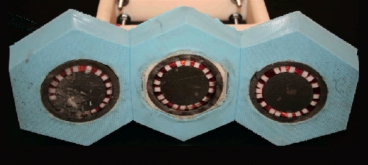A research team from MIT has designed a ‘controllable adhesion system’ which can be of help to underwater robot while they undertake underwater missions. The adhesion system provides the robot with a high holding force for safe gripping on a variety of geometries and textures. The energy consumption of the gripper is very less and it exhibits good resistance to chemicals present underwater.
 adhesion system
adhesion system
The research team consists of Sangbae Kim and Harold E. Edgerton from the mechanical engineering department. The team has dwelled upon a number of approaches for designing the adhesion system and finally zeroed on the use of a magnetic system. The only setback in using this system is the need for electric current to set the magnet in action. Kim later came up with a changed approach where he made use of controllable electromagnets which will eliminate the need for electric current. The team designed a system having two magnets placed parallel to each other, one being a strong magnet made of neodymium iron and boron and the other a weak one made of aluminium, nickel and cobalt. The electric current flows through the weak magnet. Once the polarity of the weak magnet changes the current starts flowing making the combination a strong electromagnet. Another electric pulse through the system reverses the polarity of the magnet, and the robot is released. Kim explained that by using this system the advantage was that there was a need for only one single electric pulse. The system is designed in such a way that the weak magnet is in the centre and it is surrounded by the strong magnet which is shaped like a hollow tube. A coil is wound on the string magnet to pass the electric pulse.
The team has tested the system on iron plates and by using different strengths of electric pulse to determine the magnitude of the latching force on the iron plate. The team is planning to test the system using different strategies before they can freeze the design for use on underwater robots.
Source: http://web.mit.edu